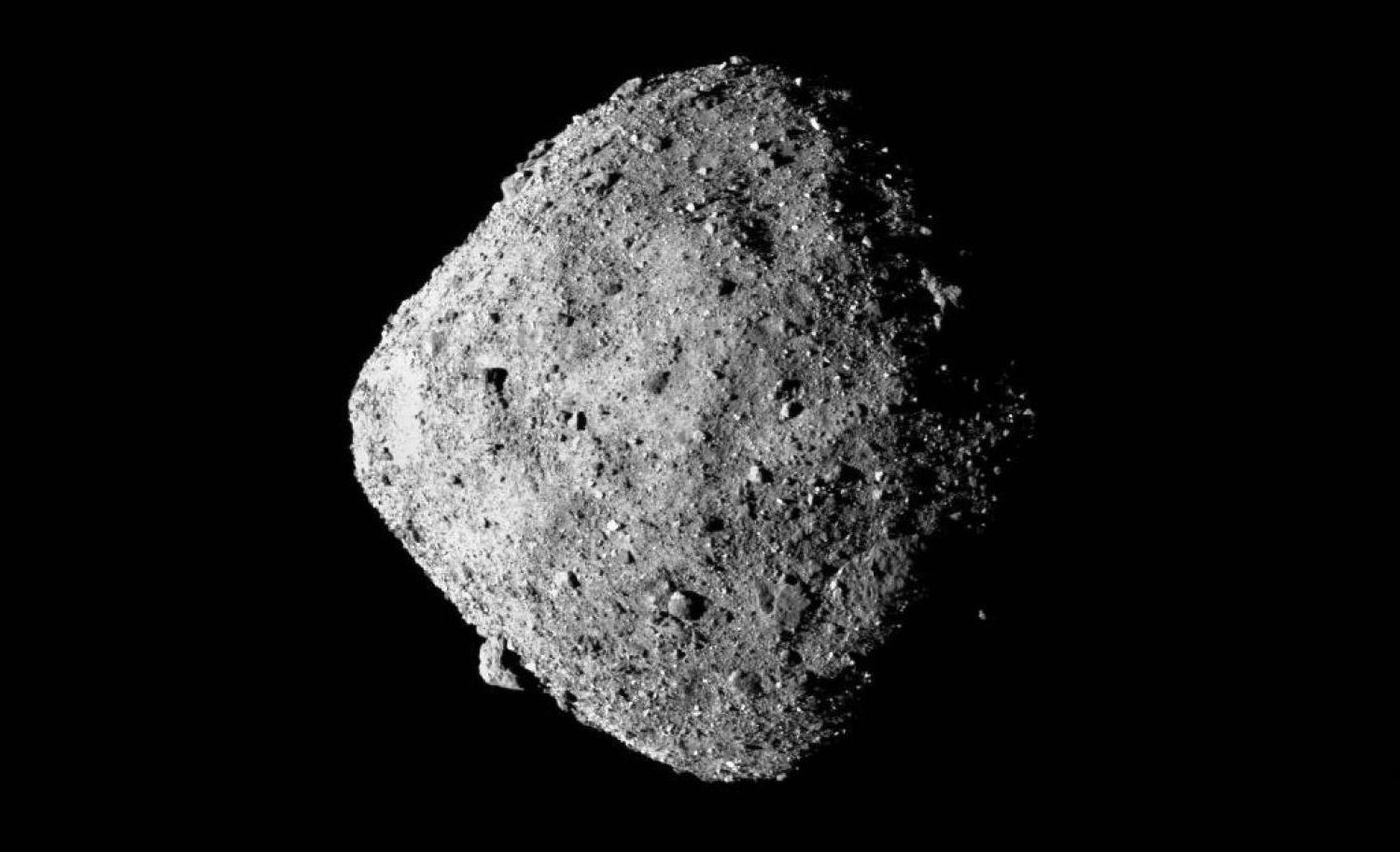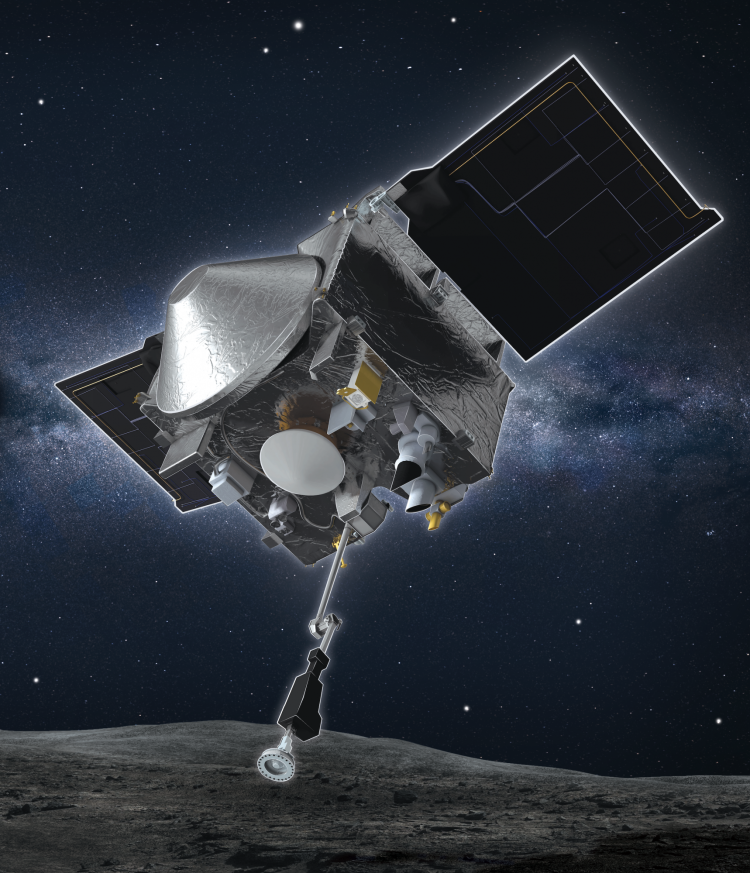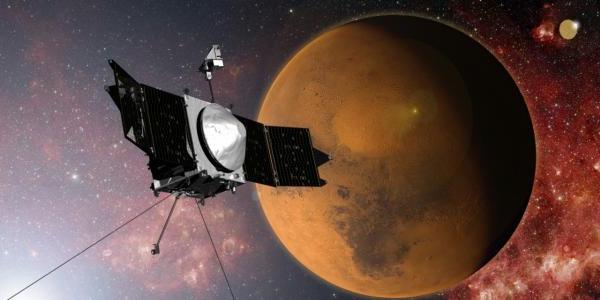 The asteroid Bennu as seen by the OSIRIS-REx spacecraft. The flying saucer-like shape of Bennu is generated, in part, by its spin. (Credit: NASA Goddard 空间 Flight Center/University of Arizona)
The asteroid Bennu as seen by the OSIRIS-REx spacecraft. The flying saucer-like shape of Bennu is generated, in part, by its spin. (Credit: NASA Goddard 空间 Flight Center/University of Arizona)
博彩平台推荐领导的研究揭示了 〇《博彩app推荐》like physics that govern gravity near the surface of the asteroid Bennu.
The new findings are part of a suite of papers published today by the team behind NASA’s Origins, Spectral Interpretation, Resource Identification, Security-Regolith Explorer (OSIRIS-REx)任务. 它们是在OSIRIS-REx之后三个月发射的 第一次遇到Bennu 12月. 3, 2018.
从那时起, the spacecraft has completed a few dozen laps around the asteroid, which is roughly as tall as the Empire State Building, 在大约一英里外环绕着本努. 和 those early circuits are giving scientists a whole new look at this mysterious rock, 博彩平台推荐的丹尼尔·舍尔斯说, 谁领导这个任务的无线电科学小组.
在一项研究中 自然天文学, 例如, his team reports the mass of that asteroid: a respectable 73 billion kilograms.
But Scheeres and his colleagues are also working to develop a map of the asteroid’s gravitational pull. Their findings suggest that Bennu exists in a delicate balance between two competing forces, 这是小行星疯狂旋转的结果. Bennu completes a full revolution about once every four hours. 和, 舍尔说, those forces could play an important role in the asteroid’s long-term evolution—and potential demise.
“当你把这个家伙旋转起来, you create a competition between the gravity that’s holding you down and the centrifugal acceleration, 这是想甩掉你吗,舍尔斯说。, 杰出教授 安和H.J. Smead Department of Aerospace Engineering 科学s 谁领导这个任务的无线电科学小组.
香蕉皮
来研究这些力, Scheeres and his colleagues use OSIRIS-REx’s navigational instruments to measure the minute tug that the asteroid exerts on the spacecraft.
而且他们挖出的东西比预期的要多. 根据该组织的计算, the region around Bennu’s equator is trapped within a gravitational feature called a rotational Roche lobe--something that scientists had not yet clearly observed on an asteroid.
在实践中,这个功能变得很奇怪. If you were standing inside the boundaries of Bennu’s Roche lobe and slipped on a banana peel, 例如, not much would happen—you’d be captured by the lobe and fall back to the surface.
“But if you were outside of the Roche lobe and slipped on a banana peel, 你会滚向赤道,舍尔斯说. “和 you could gain enough energy so that you’d roll off the equator and maybe up into orbit and then out into space.”
It sounds like the sort of environment that Lewis Carroll could appreciate. But it also matters for the lifespan of Bennu, he added.
旋转到死
 An artist's depiction of OSIRIS-REx collecting a sample of material from the surface of Bennu. (Credit: NASA Goddard 空间 Flight Center/University of Arizona)
An artist's depiction of OSIRIS-REx collecting a sample of material from the surface of Bennu. (Credit: NASA Goddard 空间 Flight Center/University of Arizona)
That’s because radiation from the sun is causing Bennu to spin faster and faster over time. 随着小行星旋转的速度加快, 它的罗氏叶可能也在萎缩, 连同维系它的力量一起.
“As that Roche lobe narrows further and further around the equator, it becomes easier and easier for this asteroid to lose material,舍尔斯说. “到目前为止, 这些物质被重力困住了, 但在某种程度上, 如果小行星继续以更快的速度旋转, 然后你掉下悬崖.”
In other words, Bennu could be in the process of spinning itself into oblivion.
Understanding those physics matters for advance OSIRIS-REx’s scientific mission, 太, 杰伊·麦克马洪说, an assistant professor in aerospace engineering and a co-author of the new study.
他在2020年解释了这一点, mission scientists will nudge OSIRIS-REx to within a few feet of Bennu, using the spacecraft’s retractable arm to collect a sample of material from the surface. 和 to do that safely, they will need to know the rock’s physics inside and out.
“You need to know the gravitational field for spacecraft operations, 让其他科学得以发展,麦克马洪说.
“When you’re going to a new world, you have some idea of what it might look like,舍尔斯说. “然后你就真的去了, and you can start comparing what you thought it might look like versus reality.”
The University of Arizona leads science operations for OSIRIS-REx, which was built by the Colorado-based Lockheed Martin 空间. NASA’s Goddard 空间 Flight Center in Maryland manages the overall mission.
Coauthors on the new study include CU Boulder graduate students 和rew French and Daniel Brack and Paul Sánchez, senior research associate at CU Boulder’s Colorado Center for Astrodynamics Research. Former CU Boulder graduate students Masatoshi Hirabayashi, Stefaan Van wal, 杰森·伦纳德, 于高桥, 珀斯Geeraert, 皮特Antreasian, 多兰Highsmith, 迈克·莫罗和E. 博·比尔豪斯(Beau Bierhaus)也对该报做出了贡献.



